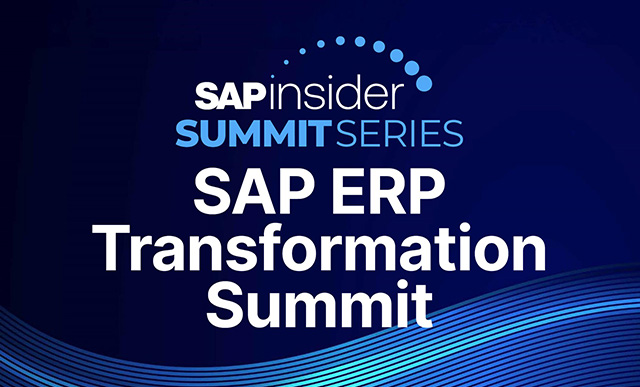SAP Enterprise Architect
SAP Enterprise Architecture Designer | SAP Enterprise Architecture Framework | SAP Enterprise Architecture Tools | SAP Platform Architecture
Filter By
Browse By
- SAP Analytics and AI
- SAP Application Development and Integration
- All SAP Application Development and Integration
- SAP ABAP
- SAP ABAP Development Tools
- SAP ABAP Test Cockpit
- SAP API Management
- SAP BAPI
- SAP Basis
- SAP BRF
- SAP Business Application Studio
- SAP CMS
- SAP Design Studio
- SAP Development Tools
- SAP DevOps
- SAP EAI
- SAP EDI
- SAP Extension Suite
- SAP Fiori
- SAP Fiori Elements
- SAP Integration Suite
- SAP Low Code Application Development
- SAP Low Code Automation
- SAP Netweaver
- SAP Release Management
- SAP UI5
- SAP Web Application Server
- SAP Web IDE
- SAP Business Process Management
- SAP Center of Excellence
- SAP CIO
- SAP Customer Experience
- SAP Data and Data Management
- All SAP Data and Data Management
- SAP BW
- SAP BW/4HANA
- SAP Crystal Reports
- SAP Data Archiving
- SAP Data Center
- SAP Data Governance
- SAP Data Integration
- SAP Data Migration
- SAP Data Quality
- SAP Data Services
- SAP Data Strategy
- SAP Data Visualization
- SAP Data Warehouse Cloud
- SAP DMS
- SAP Document Control
- SAP EIM
- SAP ETL
- SAP ETL Tools
- SAP HANA
- SAP HANA Administration
- SAP HANA Deployment Infrastructure
- SAP HANA Studio
- SAP Master Data
- SAP Master Data Governance
- SAP MDM
- SAP Enterprise Architect
- SAP Enterprise Asset Management
- SAP ERP
- SAP Finance
- All SAP Finance
- SAP Accounting
- SAP AR AP
- SAP Asset Accounting
- SAP Billing Systems
- SAP BPC
- SAP BRIM
- SAP Cash Management
- SAP Central Finance
- SAP Controlling
- SAP COPA
- SAP Cost Center Accounting
- SAP Currency Risk
- SAP e-invoicing
- SAP FICO
- SAP Finance Automation
- SAP Advanced Financial Closing
- SAP Financial Consolidation
- SAP Financial Planning
- SAP FX Risk
- SAP General Ledger
- SAP Global Tax Management
- SAP Hyperion
- SAP Order to Cash
- SAP Payment Processing
- SAP Profitability Analysis
- SAP Rebate Management
- SAP S/4HANA Finance
- SAP SWIFT Compliance
- SAP Treasury Management
- SAP Universal Journal
- SAP Governance Risk and Compliance
- SAP Human Capital Management
- SAP Intelligent Technologies
- SAP Platform and Technology
- All SAP Platform and Technology
- SAP Business Technology Platform
- SAP Cloud
- SAP Cloud Connector
- SAP Cloud Integration Platform
- SAP Cloud Migration
- SAP Cloud Platform
- SAP Cloud Providers
- SAP Cloud Strategy
- SAP Digital Signature
- SAP Container Platform
- SAP HANA Enterprise Cloud
- SAP Digital Asset Management
- SAP Smart Forms
- SAP HEC
- SAP Digital Integration Hub
- SAP Hyperscalers
- SAP Infrastructure
- SAP Messaging
- SAP Quality and Testing
- SAP Security
- SAP Spend Management
- SAP Supply Chain Management
- All SAP Supply Chain Management
- SAP APO
- SAP Asset Management
- SAP Business Network
- SAP Digital Manufacturing Cloud
- SAP Digital Twin
- SAP EWM
- SAP IBP
- SAP Inventory Management
- SAP Label Printing
- SAP Logistics
- SAP Manufacturing
- SAP Manufacturing Automation
- SAP MES
- SAP MII
- SAP MM
- SAP MRO
- SAP MRP
- SAP Order Management
- SAP Plant Maintenance
- SAP PLM
- SAP Production Planning
- SAP S&OP
- SAP SD
- SAP SPM
- SAP Supply Chain Planning
- SAP Track and Trace
- SAP Transportation Management
- SAP System Administration
What is an SAP Enterprise Architect?
Enterprise Architects are responsible for the upkeep and maintenance of an organization’s IT networks and services. This includes overseeing, improving, and upgrading enterprise services, software, and hardware, but one of the key parts of the role is in mapping how business processes correspond with infrastructure and software that the business uses. But there is also a need to understand the problems that a business faces, collect data on it, and then use that knowledge to identify solutions and communicate that clearly across the organization.
What is an SAP Enterprise Architect?
Enterprise Architects are responsible for the upkeep and maintenance of an organization’s IT networks and services. This includes overseeing, improving, and upgrading enterprise services, software, and hardware, but one of the key parts of the role is in mapping how business processes correspond with infrastructure and software that the business uses. But there is also a need to understand the problems that a business faces, collect data on it, and then use that knowledge to identify solutions and communicate that clearly across the organization.
An SAP Enterprise Architect is an expert in SAP solutions who sets and manages the organization’s SAP landscape based on required business processes. SAP Enterprise Architects have a specialized knowledge of SAP technology and solutions, and so are able to create an SAP Enterprise Architecture Framework basked on their organization’s need and specific structure. They are responsible for envisioning, communicating, and evolving the IT landscape for both SAP solutions and those that they are interconnected with across the organization.
An SAP Enterprise Architect will leverage different capabilities as they perform their role within the organization. This includes:
- Creating a enterprise architecture using the SAP Enterprise Architecture Framework.
- Using SAP Enterprise Architecture Designer to visualize the architecture framework and map the business and process flows across the enterprise.
- Leveraging other SAP Enterprise Architecture Tools to map dependencies and relationships across models, capabilities, people, processes, data, information, and applications.
- Working closely with other architects to bring together the SAP Enterprise Architecture and technology architectures in a comprehensive SAP Platform Architecture.
To better allow SAP Enterprise Architects to perform their roles, SAP has created several openSAP courses to put their technology into a business context. An example of these are Enterprise Architecture in the Era of the Intelligent Enterprise and An Enterprise Architect’s View on SAP Business Technology Platform.
SAPinsider has run events specifically for the SAP Enterprise Architect such as the SAP Enterprise Architect Virtual Global Summit. These provide technology and business-focused sessions designed to specifically help architects understand how new and changing SAP solutions will impact their organizations in the future.
856 results
-

Master Barcode Labeling from SAP S/4HANA, SAP ECC and SAP EWM
Reading time: 27 mins
Thank you for registering for this live Q&A on how SAP customers use Enterprise Labeling Solutions. Please find the transcript below. Matthew Shea: Hello and welcome to today’s SAPinsider live Q&A. We will be discussing how SAP customers that use SAP ERP Central Component (SAP ECC), SAP S/4HANA, and SAP Extended Warehouse Management (SAP EWM)...…
-

- SAP Sustainability
 Premium
Premium
How Organizations Can Achieve Enterprise Sustainability
Reading time: 7 mins
Sustainability is more than just a buzzword. It is a key element of the ESG (environment, social, and governance) puzzle. Organizations can no longer merely pay it lip service. Today, sustainability efforts must satisfy employees and shareholders, and provide a global positive impact. Sustainability discussions today often begin and end around the measure of a…
-

 Premium
Premium
Mobile Device Management with Sybase Afaria
Reading time: 12 mins
/MobileWith the rise of mobile devices in business comes the responsibility of device management, allowing the cohabitation of personal and corporate data while still maintaining enterprise-level security. Find out how to manage mobile devices with Sybase Afaria. Learn about its architecture. Follow steps to install, configure, and apply initial security policies to this application. Key...…
-
-

 Premium
Premium
Configure SAP BusinessObjects Planning and Consolidation for SAP NetWeaver to Optimize System Performance
Reading time: 29 mins
Read about the underlying architecture for SAP BusinessObjects Planning and Consolidation 7.0, version for SAP NetWeaver. Learn how to set up the connectivity between the different SAP BusinessObjects Planning and Consolidation clients and servers, and how to change different ABAP and .NET settings to optimize system performance. Key Concept The term application has several meanings...…
-

Unlocking the Future of SAP Data: How Dell’s Lakehouse Architecture Redefines Enterprise Data Management
Reading time: 3 mins
Dell Technologies is addressing the challenge of data silos in SAP environments by introducing a next-generation Data Lakehouse that unifies structured and unstructured data, enabling real-time analytics and reducing integration costs, ultimately empowering businesses to drive insights, innovation, and competitive advantage.
-

 Premium
Premium
Entertainment Industry Pricing and Pricing Architecture in SAP CRM-IPM 7.0 with Enhancement Package 1
Reading time: 20 mins
Learn about commonly used entertainment industry pricing models, SAP CRM-IPM pricing architecture, and royalty scopes. See how they support pricing calculations and user data entry, and discover potential gaps that you might encounter in the media industry, especially with television companies. Key Concept The entertainment industry has unique needs involved in pricing licenses sale contracts...…
-

- SAP BI Tools
 Premium
Premium
An Introduction to SAP Predictive Analytics 2.0 and SAP HANA Predictive Tools
Reading time: 64 mins
In this exclusive report by Hillary Bliss, take a walk into the world of the SAP suite of predictive tools with an in-depth tour of the new SAP Predictive Analytics 2.0 and how it ties into SAP HANA and SAP Lumira. Learn the importance of general predictive modeling concepts, and then apply those concepts as...…
-
-

- SAP BI Tools
 Premium
Premium
An Introduction to SAP Predictive Analysis and How It Integrates with SAP HANA
Reading time: 57 mins
In this exclusive report, take a walk into the world of SAP Predictive Analysis and how it ties into SAP HANA and SAP Lumira (formerly known as SAP Visual Intelligence). Learn the importance of general predictive modeling concepts, and then apply those concepts as part of a bigger discussion about the architecture and features of...…
-

- SAP Cloud Migration
 Premium
Premium
Understanding Your SAP System Architecture Before Migrating to the Cloud
Reading time: 11 mins
Before migrating your existing SAP systems to the cloud—an initiative that many businesses are undertaking to remain relevant and redefine their IT landscape—it’s important that SAP customers understand their system architecture. Knowing where the connection points are between different pieces of architecture, where you’re putting them from an infrastructure perspective, and what sort of information…
-

 Premium
Premium
5-Step Roadmap to a Sound SAP xMII Deployment
Reading time: 40 mins
This five-step roadmap helps you understand what you need to do to implement SAP xApp Manufacturing Integration and Intelligence, build an effective team, and establish a rapid deployment model that you can repeat and enhance after every deployment. Key Concept An SAP xApp Manufacturing Integration and Intelligence (xMII) implementation involves functional synchronization and reengineering of...…
Become a Member
Unlimited access to thousands of resources for SAP-specific expertise that can only be found here.
Become a Partner
Access exclusive SAP insights, expert marketing strategies, and high-value services including research reports, webinars, and buyers' guides, all designed to boost your campaign ROI by up to 50% within the SAP ecosystem.
Upcoming Events
-

SAPinsider ERP Transformation Summit
October 22 - 23, 2025
New Orleans, Louisiana
United States
View Event
Related Vendors
Your request has been successfully sent

